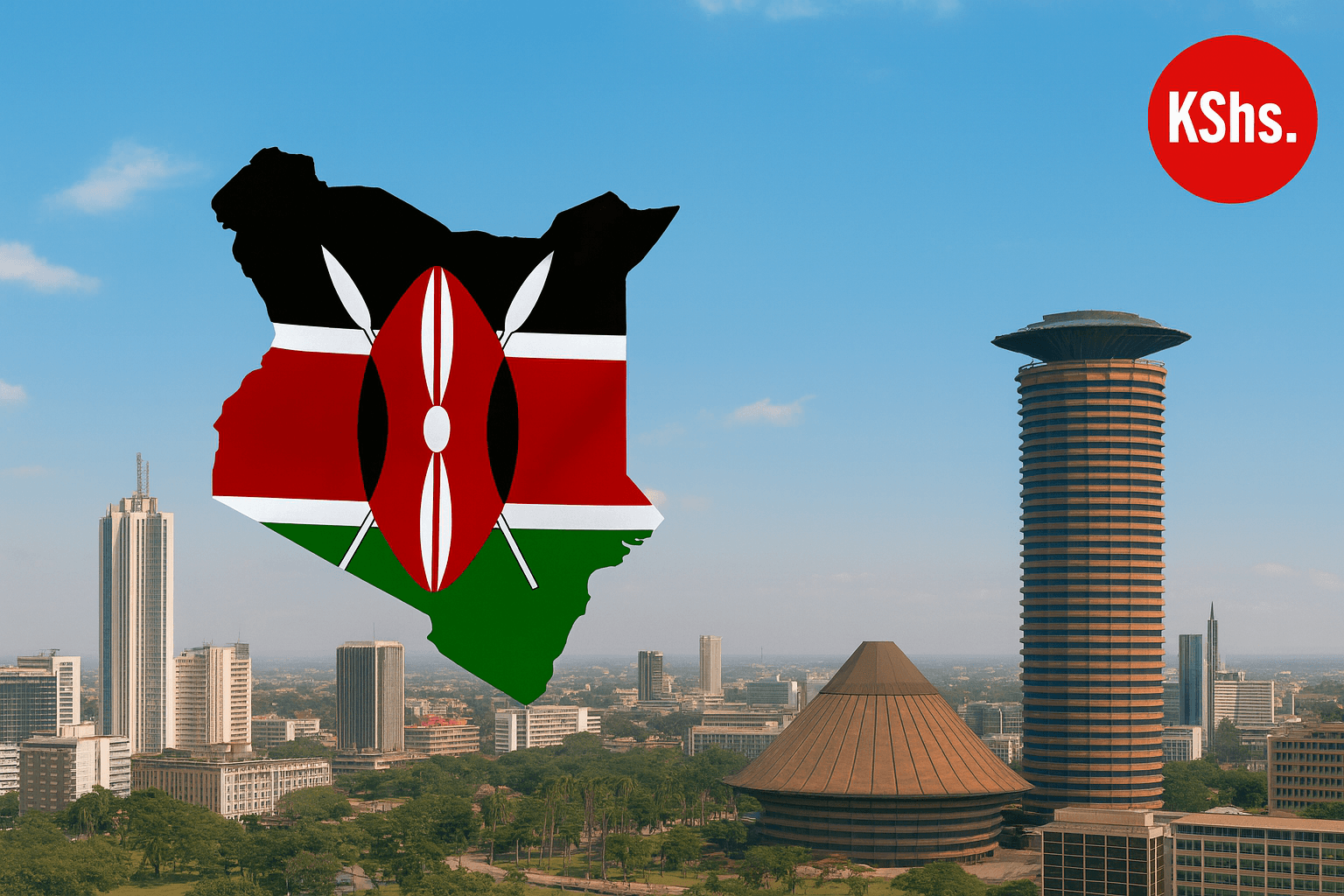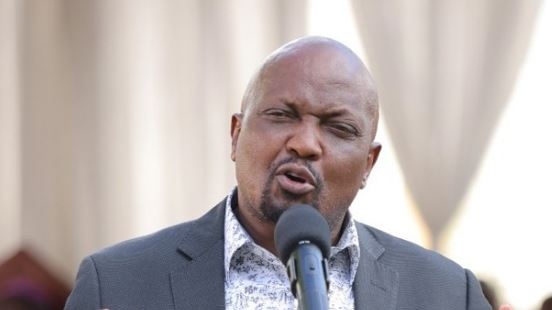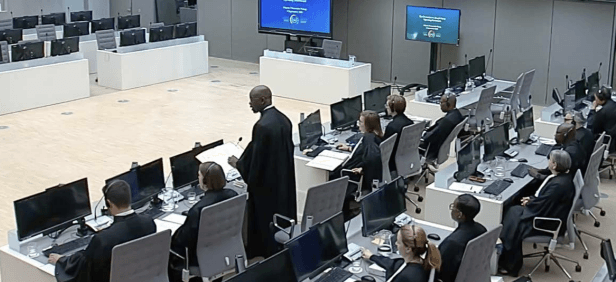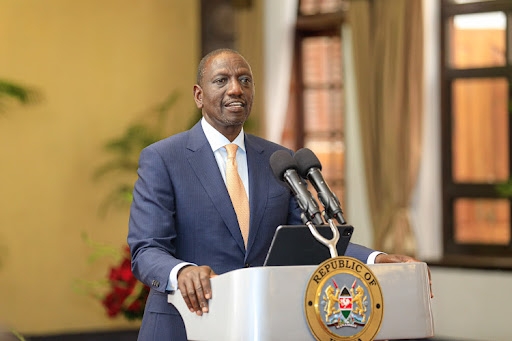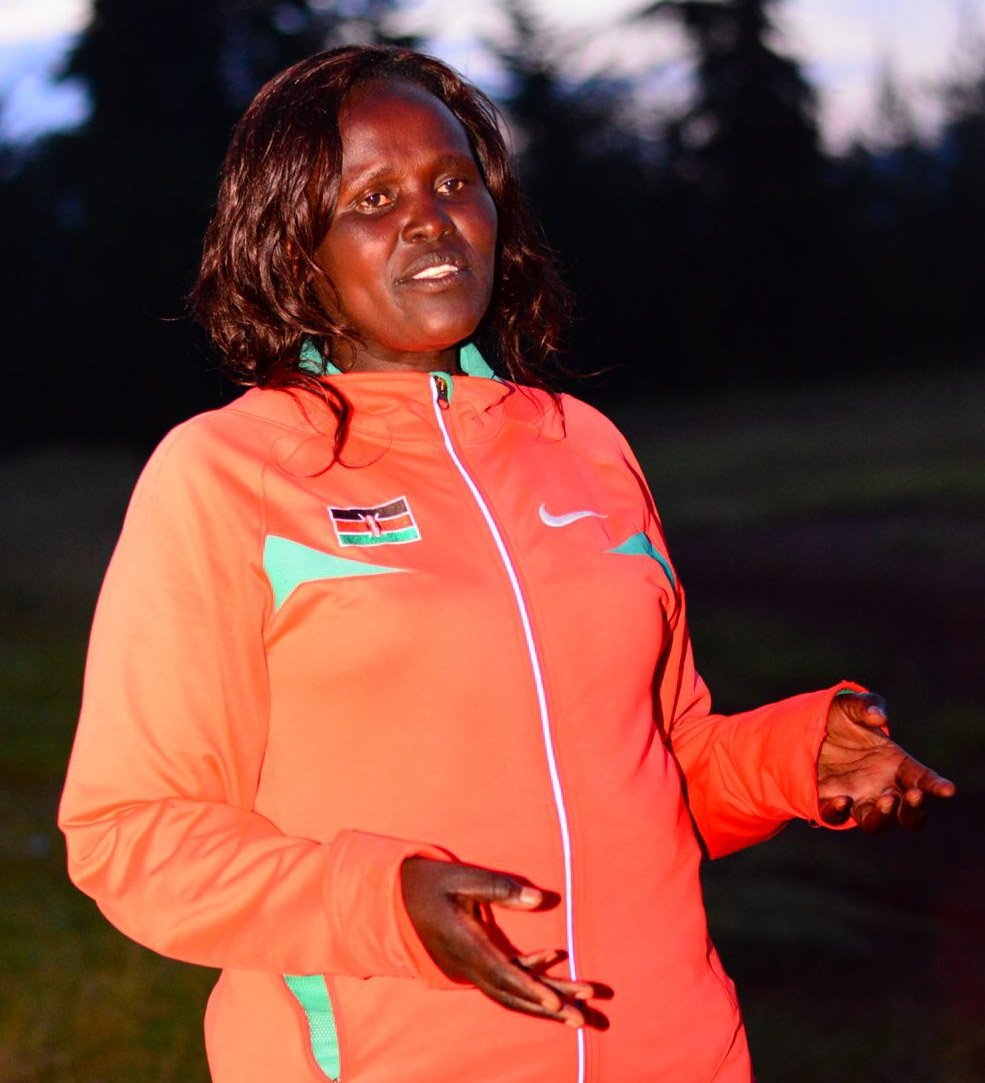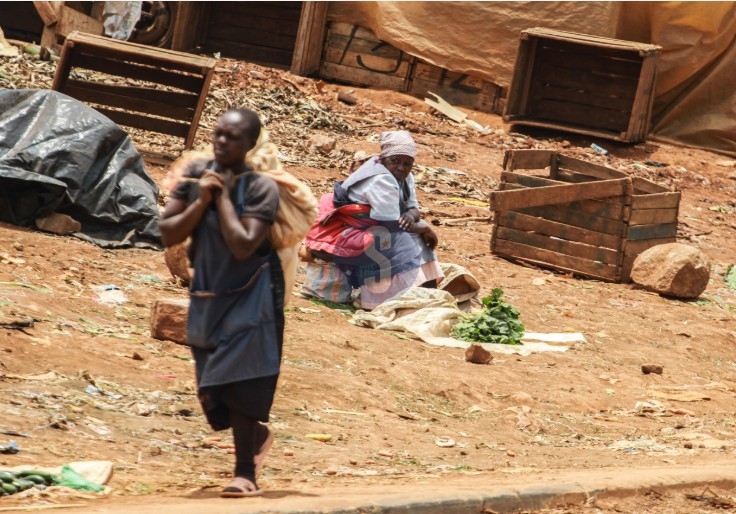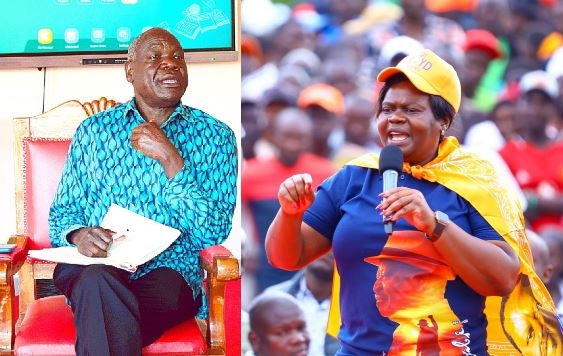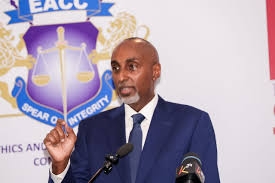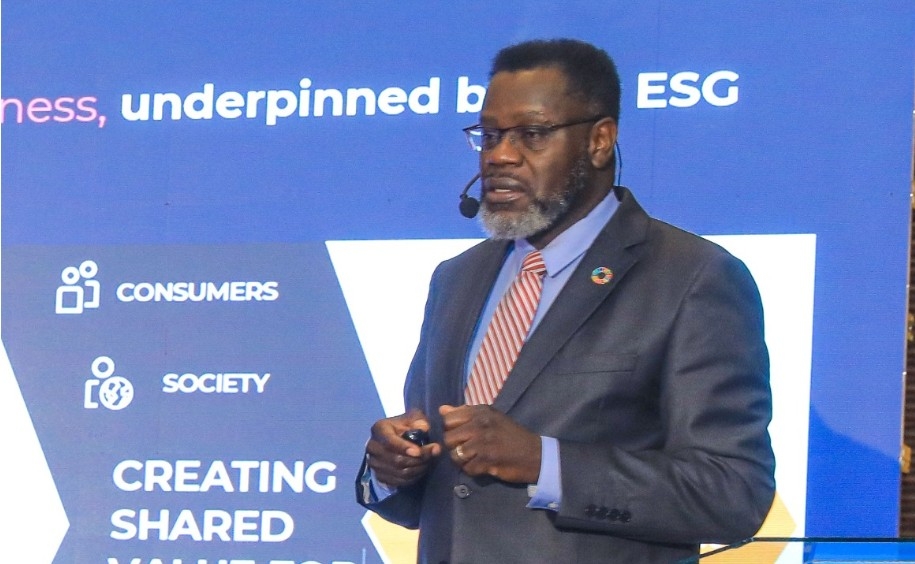Kenya’s digital transformation has picked up apace, during the short time that the Kenya Kwanza government has been in office.
We arrived on the scene towards the end of last year, clear in mind that this transformation was a national priority.
The digital superhighway had been identified among the five pillars of President William Ruto’s Bottom-Up Economic Transformation Agenda.
To uplift those at the bottom of the social and economic pyramid, the Ruto Plan entails five core thematic pillars.
They are agriculture, affordable housing, small and medium sector enterprises, universal health care and the digital superhighway.
The superhighway was intended both as a prime mover for the other four pillars and a critical success factor for the country moving forward.
We as the Ministry of Information, Communication and the Digital Economy have so far realized fundamental milestones in the digital transformation task that we were assigned.
Our target of laying out an extra 100,000 km of fibre optic is on course.
This means an average of 25,000 km annually, over the period of the first term of this government.
A modest target of 5,000 km of fibre optic was, accordingly, set as our target for the period ending June 30, 2023.
We have surpassed this target. The total extra fibre optic rolled out under the Kenya Kwanza government stood at 5,280 km at the end of July.
The key driver was an astute partnership with both State and non-State partners.
Meanwhile, we have mapped out, in granular detail, where the 100,000 km of National Optic Fibre Network Backhaul Initiative (NOFBI) is ongoing.
We will accelerate our efforts in the current financial year, to make up for what we could not do because of budgetary restrictions.
Through the Universal Service Fund (USF) we are reaching and connecting those parts of the country that have not seemed commercially viable for our Private Sector Partners to invest in.
How does this fund work? The government, through the Communications Authority, collects the service levy from mobile network operators. The levy is then used to close this gap in connectivity.
Presently, the ministry has up to Sh 5 billion for last-mile connectivity under USF. The areas to be connected with these initial funds have already been mapped out.
The Government Common Core Network, installed in 2008, is ageing.
The wear and tear have led to Internet outages across government ministries, departments and agencies.
The network is, accordingly, now being upgraded. We are therefore laying out ducts in the Nairobi CBD and its suburbs, such as Upper Hill, all the way to Kenyatta National Hospital, and Thika Road.
Installation and operationalization of Public Wi-Fi hotspots is easily one of our most visible tasks.
The objective is to bring small businesses into the core of the digital economy.
The government is providing free public Wi-Fi, with a target of 25,000 hotspots across the country by the year 2027.
Some 14,690 spots have been identified across the country, for installation of Wi-Fi.
Based on the Ministry's collaboration with county governments, 194 WI-Fi hotspots have been installed in marketplaces and county headquarters.
Some 172 public Wi-Fi hotspots have been installed as part of community innovation hubs, while ICTA has installed another 55 hotspots; thereby giving a total of 421.
Parallel to this are village digital hubs. The objective is to equip the youth with digital skills for digitally-enabled jobs, and digital entrepreneurship.
We then link the youth to platforms with digitally-enabled jobs. Over the five years, we are looking at 1,450 digital hubs.
In this regard, the government, through the ministry, aims to establish one hub in each of the 1,450 County Assembly electoral wards in the country.
This works out to 290 hubs annually. So far 174 have been installed.
Digitization of government records and digitalisation of services is, in earnest.
The objective is to give Kenyans the comfort of accessing services virtually from wherever they may be.
The strategy is to place all government services on the e-Citizen digital platform, something that we purpose to realize by the close of this year.
The target for the end of June 2023 was 5,000 services. We surpassed this to reach 5,084 services. Meanwhile, another 2,555 services have been partially onboarded. When we came to the office, only 350 services were on the platform.
Digital skilling is another fundamental goal. We are driving these through Ajira and Jitume programs, equipping citizens with digital skills.
In collaboration with technical and vocational training institutes under the Ministry of Education, we purpose to equip one million learners with ICT skills for digital entrepreneurship.
Ultimately we will place 23,000 computers in these institutions.
As of July 31, 2023, some 77 vocational entities had received 6,700 desktops. In all, we have supplied a total of 8,159 virtual desktops to institutions across the country, for this purpose.
Meanwhile, to support digital entrepreneurship, the Ministry has held conversations with mobile network operators on producing low-cost digital telephone gadgets and other digital devices.
The production of these devices is largely a private sector function. Assembly of the phones, and related gadgets, is ongoing.
The first batch of affordable smart mobile phones, to retail at about USD 40.00 per unit, will be ready in the Kenyan market this year.
In E-commerce, we have prepared an elaborate strategy and are raising awareness of e-Commerce, through the Ajira Digital Programme.
A survey by Mastercard, last year, showed that roughly 1.9 million Kenyans were engaged in the gig economy.
This was an increase from 638,000 in 2019. The future of the digital economy and digital entrepreneurship in the country looks bright.
Further, the incorporation of digital marketing and e-commerce training modules into the ministry’s Ajira digital skills training program has prepared over 300,000 youth to take up opportunities in the e-commerce space.
Key established enablers for e-commerce include the 221 public Wi-Fi hotspots, overall 22,000 Km of fibre optic cable already installed, 179 complete and functional innovation hubs countrywide, and 112 Jitume centres, as detailed.
An individual digital identity for every Kenyan is, meanwhile, of the essence for a functional digital economy.
It is important to authenticate people’s identity on this platform, just as it is in legacy in-person situations.
The President has put together a multi-agency team to pursue this task and we have embarked on the journey with zeal to make the personal digital identity a reality.
The National Addressing System is another critical component of the digital economy.
This economy requires that goods and services should reach people wherever they may be, with maximum ease.
For this, a detailed national addressing system is of the essence.
A draft Policy and Bill on the National Addressing System has been developed. Stakeholder engagement was undertaken, and comments were incorporated.
Validation by stakeholders is pending before submission to Cabinet for consideration and approval.
As part of this agenda, the Nairobi cadastral (mapping) is complete. We have mapped out 241 blocks.
The National Addressing System will deploy these blocks to facilitate e-Commerce in the City of Nairobi. The same will be gradually taken to the rest of the country.
Digitalization of the Cabinet is yet another exciting achievement.
The Cabinet Secretariat established the Joint Implementation Team, constituting of the MIC-DE, Konza Technopolis Development Authority, the ICT Authority (ICTA), the Communications Authority of Kenya, and the Cabinet Secretariat Office to digitalize and automate the business of the Cabinet.
The joint secretariat has delivered, installed, and operationalized 92 video conferencing facilities in all government ministries and State departments, the Presidency, and the office of the Prime Cabinet Secretary as of June 2023.
An enabling legal, legislative and policy framework must override all the foregoing. Four different draft policies are in various stages of development.
They include the National Policy on Public Relations and Communication Management (waiting for Cabinet approval); National Addressing System of Kenya Policy (To be submitted to Cabinet for consideration and approval); National ICT Policy Guidelines: 2020 (Now approved by Cabinet, pending Gazettment); and Access to Information Policy (Public participation complete, to go to Cabinet).
In the same vein, a number of Cabinet Memoranda are ready for submission to Cabinet for approval.
They include a Memo each on the Revitalization of the Kenya Broadcasting Corporation, for Sustainable Operations of KBC; the Revitalization of the Postal Corporation of Kenya for Sustainable operations of PCK; and the Re-Engineering of the Government Advertising Agency (KNA).
In the legislative space, a number of Bills have reached also various stages.
The ICTA Bill is at the drafting stage. It will give ICTA a solid legal foundation as a semi-autonomous state agency; The National Addressing Bill has undergone public participation.
Its functional focus is as detailed above; while the KIMC Bill will give the institute a solid legal mandate to carry out its responsibilities as a SAGA established by an Act of Parliament.
Others are the KICA Bill (Amendment), to bring the legal environment in line with technological advances and realities; the Public Relations and Communication Management Bill, to provide a legal framework to regulate the manner in which professionals conduct their practice (pending before the Cabinet); and the Technopolis Bill, to give a solid legal foundation to KoTDA.
At the back of every citizen’s mind is the question of cybersecurity risk mitigation and data protection.
How safe is our personal information and privacy? The Government has embarked on the necessary steps to ratify the African Union Convention on Cybersecurity and Personal Data Protection (the Malabo Convention) instrument.
Under the aegis of the African Union, the Malabo Convention envisages Africa as a single entity for purposes of data protection and privacy.
It calls for a harmonized, independent, and robust continental legal framework that will protect all the peoples of Africa, and people in Africa, from violation by processors and data controllers.
Moreover, the office of the Data Commissioner has also been established and operationalized. Further, a multi-agency Government team has been established to handle cybersecurity.
It includes representatives from the Ministry of Defence, Ministry of Interior and National Administration, NIS, Ministry of Information, Communication and the Digital Economy, the Communications Authority, and the National Computer and Cybercrime Coordination Committee (NC4).
Identifying and sourcing funds to support these programmes is as critical as the programmes. Among the kitties is the Kenya Digital Economy Acceleration Program (KDEAP).
KDEAP is an offshoot of the World Bank’s Digital Economy Moonshot Program.
This program has the development objective of expanding access to high-speed Internet, improving the efficiency of Government services, and strengthening the enabling environment for the adoption of digital technology.
KDEAP has interlinked components that harness opportunities to develop the Kenyan digital economy as a driver of growth and job creation and to leverage digital technologies for improved service delivery and resilience.
Focal areas include NOFBI, connectivity, upgrades and expansions of bandwidth and repairs of aged infrastructure.
Another very important target area is creating secure unified platforms to enable continuity during emergencies including upscaling of cybersecurity capabilities, and of course last mile delivery of Internet services to our people, wherever they may be in the country.
As a flagship country under the World Bank’s Moonshot project, Kenya is working in collaboration with the Bank on all the component areas of this agenda, with funding opportunities of up to USD 500 million already obtained.
Through the National Treasury, the agreement was signed on 14 June 2023 to accelerate our Digital Superhighway agenda. Kenyans should, therefore, expect to see faster implementation of their digital agenda.
Revitalization of the Kenya Broadcasting Corporation was one of the pledges I made, even before formally taking over as CS. This work has begun.
The focus is on upgrading the infrastructure; reviewing of business model and content; and retooling. These assignments are ongoing.
Revitalization of the Postal Corporation of Kenya (PCK) is another. We are focusing on improved e-Government delivery; scaled-up services with MDAs and EMS; as well as digital skills for robust digital commerce that embraces best global practices.
To serve Kenyans better, we are in the process of setting up the National Contact Centre. This is being developed as a central point from which citizens will interact with their Government across various channels.
The contact centre will use digital methods of communication, such as social media messaging, email, and online chats, to connect with customers.
To this end, the Ministry is currently piloting a contact centre that provides service to all citizens through dedicated contact centre officers, who are already providing 24/7 and 365 availability support to citizens seeking to interact with the Government.
We are either connecting citizens to Government officers, or enabling them to reach us through log calls on matters of interest to be responded to by relevant officers, or MDAs.
The service is being piloted by KONZA in Nandi, Elgeyo Marakwet, and Baringo counties. We will have a single memorable number to be routed all over Government.
Equally, work on the digital signature.
We have embarked on institutionalization of digital signatures to be used by GoK entities to undertake secure authentication of documents and secure transactions, as part of enabling E-commerce and digital transactions. Implementation and deployment of digital signatures in MDAs are ongoing.
Our digital transformation agenda will enable us to re-engineer our business processes; enhance efficiency and effectiveness in service delivery; create jobs and widen the tax base.
We will be able to service all our external debts and remain with a surplus to finance both our development and recurrent expenditure.
Stakeholder alliances and partnerships are imperative.
Successful implementation of our digital Masterplan as espoused above will enable us to position Kenya effectively as the ICT Hub of Africa and on the global stage by way of comparative advantage.
Our Vision of an empowered and Digitized Kenyan Economy is on the horizon.
The writer is the Cabinet Secretary in the Ministry of Information, Communications and the Digital Economy.


